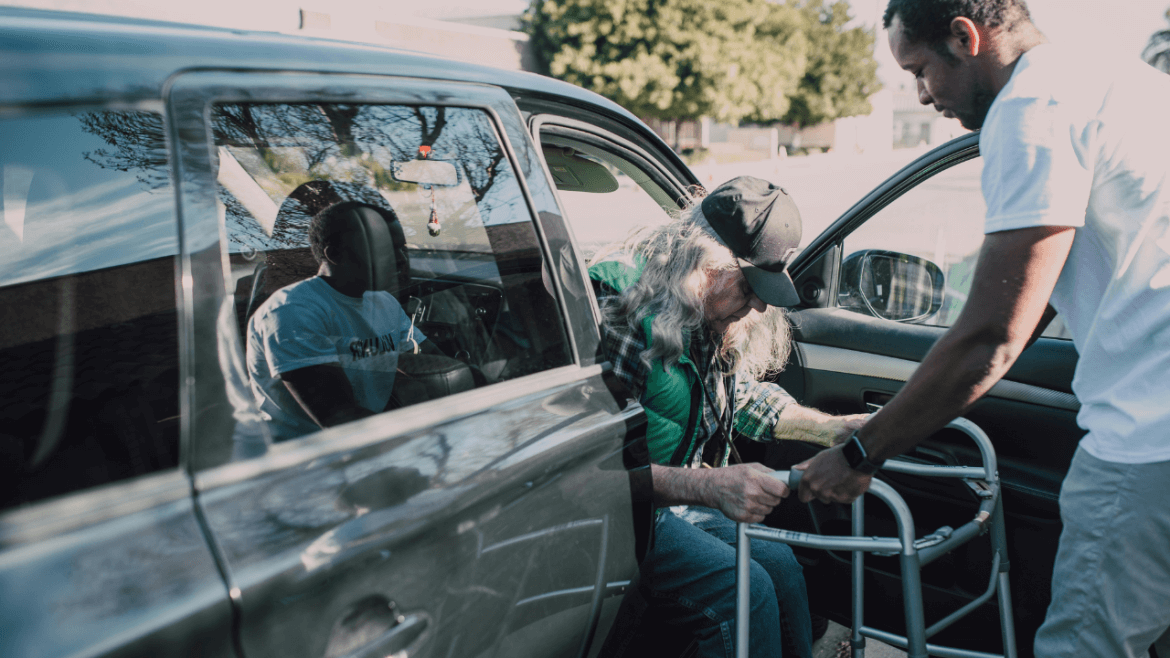Did you know that Leading Edge Senior Care has a Dementia Support Group? We meet monthly in Mesa. For more details <click here>
Best Mobility Equipment For A Senior At Home
As seniors age, maintaining mobility can become a significant challenge. Reduced strength, balance issues, and various medical conditions often limit a senior’s ability to move around safely. Yet, the ability to remain mobile is essential for independence and quality of life.
This is where mobility equipment can make all the difference. Selecting the right tools can give seniors the freedom they need while ensuring their safety at home. Understanding the best options available is vital to support their daily lives.
Walkers: A Lifeline for Stability
Walkers provide stability for seniors who struggle with balance but can still walk. Whether it’s a standard walker or a wheeled one, these devices are invaluable for indoor use, allowing seniors to move from room to room confidently. Walkers typically feature handles that offer support and may also come with wheels, depending on the user’s needs.
In many cases, these tools can help reduce the risk of falls, one of the biggest concerns for elderly individuals. When choosing a walker, be sure to assess the senior’s specific mobility level and how comfortable they are with handling one. Additionally, padded grips and adjustable height can enhance the overall comfort.
Canes: Simple Yet Effective
For seniors who may not need the full support of a walker, canes can be a less intrusive, more manageable option. Canes provide just enough extra support to help with mild balance issues or joint pain, particularly in the hips and knees. They are versatile, easy to carry, and come in various designs tailored to individual needs.
Whether it’s a single-tip cane for a little added balance or a quad cane with four prongs for extra stability, these devices are lightweight and highly portable. A major benefit of canes is their simplicity—they are quick to grab and use, making them ideal for short trips around the house.
Wheelchairs: For Enhanced Mobility
When walking becomes too painful or difficult, wheelchairs provide an alternative. Some seniors may rely on wheelchairs part-time, such as for longer distances, while others may need them full-time for all mobility needs. Wheelchairs offer a level of independence for those who might otherwise feel trapped by their physical limitations.
Manual wheelchairs are great for those who can still use their arms to propel themselves, while powered wheelchairs offer increased ease of movement for seniors with limited strength. Choosing between the two depends on the senior’s physical condition and personal preferences. In either case, a wheelchair helps seniors stay active within their home environment, whether for getting to the kitchen or moving to another room.
Stair Lifts: Navigating Vertical Spaces Safely
Stairs can pose a severe risk for seniors, particularly those with joint pain, weakened muscles, or balance issues. Stair lifts are installed along a staircase to provide a safe means of getting up and down without the risk of falling. These devices allow seniors to stay in multi-level homes without worrying about the hazards of navigating the stairs.
Stair lifts typically come with a comfortable seat and a harness for added security. They operate using simple controls, making it easy for seniors to move between floors without exerting themselves. In terms of home mobility, a stair lift can greatly extend the usability of a home and reduce the need for relocation.
Mobility Scooters: Independence Indoors and Outdoors
For seniors who need assistance both at home and when going out, mobility scooters offer an excellent option. Unlike wheelchairs, mobility scooters are designed for longer distances and greater independence. Many seniors appreciate the ease and speed that come with a scooter, whether they’re running errands or moving around their homes.
Indoors, mobility scooters are ideal for spacious homes where a senior might need to move between rooms frequently. Outdoors, they provide an excellent way to maintain a sense of independence without needing constant assistance. A key advantage of these scooters is their adaptability—they can handle various terrains, making them useful beyond just the home.
Transitioning to Mobility Equipment: A Sensitive Process
While mobility equipment can significantly improve a senior’s quality of life, the transition to using these tools can be emotional. Many seniors associate using mobility aids with a loss of independence, which can make them resistant to the change. Family members and caregivers need to approach the topic with care and understanding.
It’s essential to emphasize the positive impact that these tools will have on their daily life—reduced risk of injury, increased independence, and enhanced mobility. Including the senior in the decision-making process is critical to ensure they feel in control of their journey toward greater safety and independence.
Conclusion
Mobility equipment plays a crucial role in helping seniors maintain their independence and safety at home. Walkers, canes, wheelchairs, stair lifts, and mobility scooters all provide various levels of support tailored to the individual’s needs. Each tool offers unique benefits, from enhancing stability to ensuring that seniors can move around their homes with ease.
Transitioning to mobility equipment can be a sensitive process, but when approached with care and respect, it can lead to a safer, more independent life for seniors. Understanding and choosing the right mobility tools can make all the difference in ensuring their comfort and well-being.

